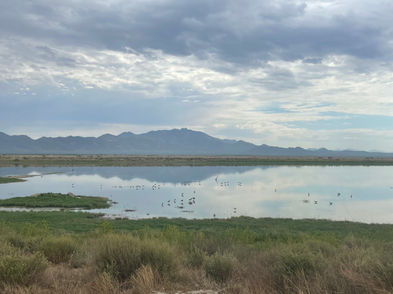Tropical Birding's Habitats of the World
'A Supplementary Website for Princeton's Habitats of the World: A Field Guide for Birders, Naturalists and Ecologists'
North American Playas - Code: Ne12J
Habitat in a Nutshell
Hard saline or alkaline pans formed in arid or semi-arid basins that periodically contain shallow ephemeral wetlands.

Description of Habitat
This type of wetland is found across the globe and goes by many names. Salt pan, salt flat, alkaline flat, dry lake, and salar are all words for the wetlands that in North America are called playas. These brilliant white moonscapes can remain dry and barren for years at a time before bursting back into life during wet spells.
North American Playas form in low-lying basins and depressions in dry environments. Playas are only found in closed watersheds with mostly impermeable clay or caliche soils. Rainwater or snowmelt periodically fill these basins, bringing with it dissolved minerals, like sodium carbonate and borax from the surrounding landscape. Centuries of filling and evaporation result in dense concentrations of salt and alkaline minerals which form a hard crust over the clay bottom of the basin.
North American Playas are inhospitable to plant growth and are typically barren. The margins of playas are usually ringed with salt-loving or alkaline tolerant plants, including several associated with coastal saltmarsh. Typical plants found at the margins of playas include shrubs like Shadscale (Atriplex confertifolia), and Iodine Bush (Allenrolfea occidentalis) as well as herbaceous plants like seepweed (Suadea spp.), Desert Saltgrass (Distichlis spicata) and common spikerush (Eleocharis palustris).
Click the Icon to View Bird Assemblage for this Habitat



